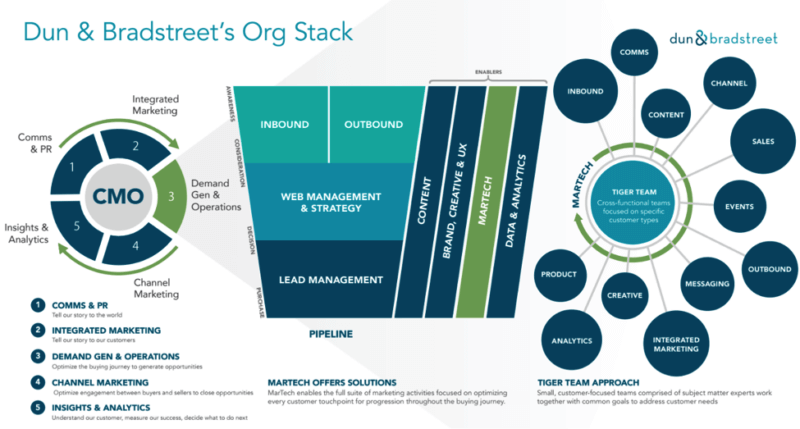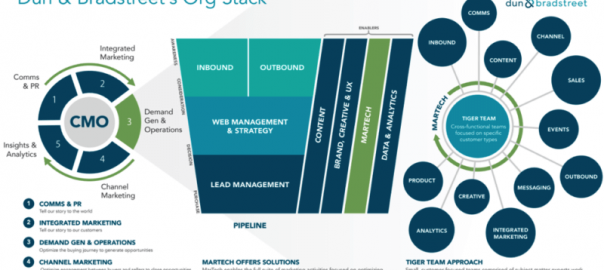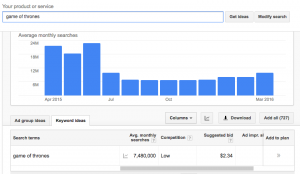Columnist Travis Wright summarizes a fireside chat at the MarTech Conference with Dun & Bradstreet CMO Rishi Dave, who explained why data should be the driving force behind every organization’s marketing efforts.

At the recent MarTech Conference in Boston, I got a chance to sit in on the opening morning’s fireside chat between Dun & Bradstreet Chief Marketing Officer Rishi Dave and conference chair Scott Brinker. One of the main points of their discussion was how data should underpin all things marketing within an organization. That includes branding, marketing, culture, and of course, the marketing technology stack itself.
It’s no accident that data and marketing have joined together within the ever-evolving consumerized environment.
With the increased emphasis on customer experience in business and marketing, the art of storytelling in marketing communications has evolved to blend seamlessly with the science of data-driven digital analytics.
Dave himself is trained as a chemical engineer and openly admits to “falling into” marketing by accident when he was called upon to provide hard-science leadership in the early days of website analytics at his previous firm. He has since become a marketer who sees opportunities to develop people, processes and technology through data.
Dave has now been the CMO of Dun & Bradstreet for nearly four years. (That’s a long time in CMO tenure, when the average is around 18 months.) They must be doing something right over at D&B!

D&B CMO Rishi Dave
Data as the force that unites and defines brands
When Dave joined the Dun & Bradstreet marketing team, he expected that he would first focus on the company’s demand-gen/digital efforts, such as content marketing, lead generation and thought leadership. While he’s certainly responsible for those endeavors, their board had other ideas: They wanted him to focus on developing a brand and culture (in partnership with the HR team) that would grow the company faster through data.
“The rationale was that if you don’t have a strong companywide understanding of what you do, why you do it, and what makes you different, then it doesn’t matter how awesome your demand gen is,” he said. “The main thing is connecting with our customers emotionally. Data helps us see what’s working and what we can do differently in all our marketing efforts.”
To this end, he pointed out how his company now uses data to measure and optimize all aspects of its marketing stack end-to-end, with the primary motivation of communicating an emotionally compelling narrative to its client personas using tech-enabled capabilities.
As a result of this data-driven initiative, their company culture measurements went up, its Net Promoter Score (NPS) increased by double digits, and its pipeline grew exponentially.
It was also the recipient of a MarTech Stackies Award.

Developing data-driven teams with deep expertise and broad collaboration
Effective martech data implementation occurs with the cross-pollination of ideas and best practices throughout an organization. Companies should collect customer data at every touch point and share it throughout the enterprise to topple siloed boundaries that inhibit brand development.
As an example, Dave discussed how Dun & Bradstreet began to make use of what he called “Tiger Teams,” essentially small groups that borrow from the agile approach to hyperfocus on a single customer segment.
What makes these work, he explained, is that each team collects and analyzes data about what’s working and what isn’t for each individual client persona, and then team members hop around to other teams exchanging information about what they’ve learned, while also absorbing best practices from other teams. The result is a customer-centric approach that’s broad in terms of collaboration and deep in terms of expertise.
To this end, they even have separate roles within their marketing department that focus on martech and marketing operations, but that are in constant communication with one another as well as other departments, such as IT and sales. The result is the proverbial whole that’s greater than the sum of its parts. And it works.
“Developing a team is the biggest challenge,” he said. You need people who are deep experts in their respective discipline, but they need to be able to collaborate across functions as well.”
In closing, Dave said to marketers who are interested in replicating Dun & Bradstreet’s success, “Don’t think of yourself as a marketer first … You’re in charge of running the whole company with a marketing mindset. Successful marketers are thinking about how they can improve the company overall. Data makes it possible.”
Some opinions expressed in this article may be those of a guest author and not necessarily Marketing Land. Staff authors are listed here.
Marketing Land – Internet Marketing News, Strategies & Tips
(143)
Report Post









